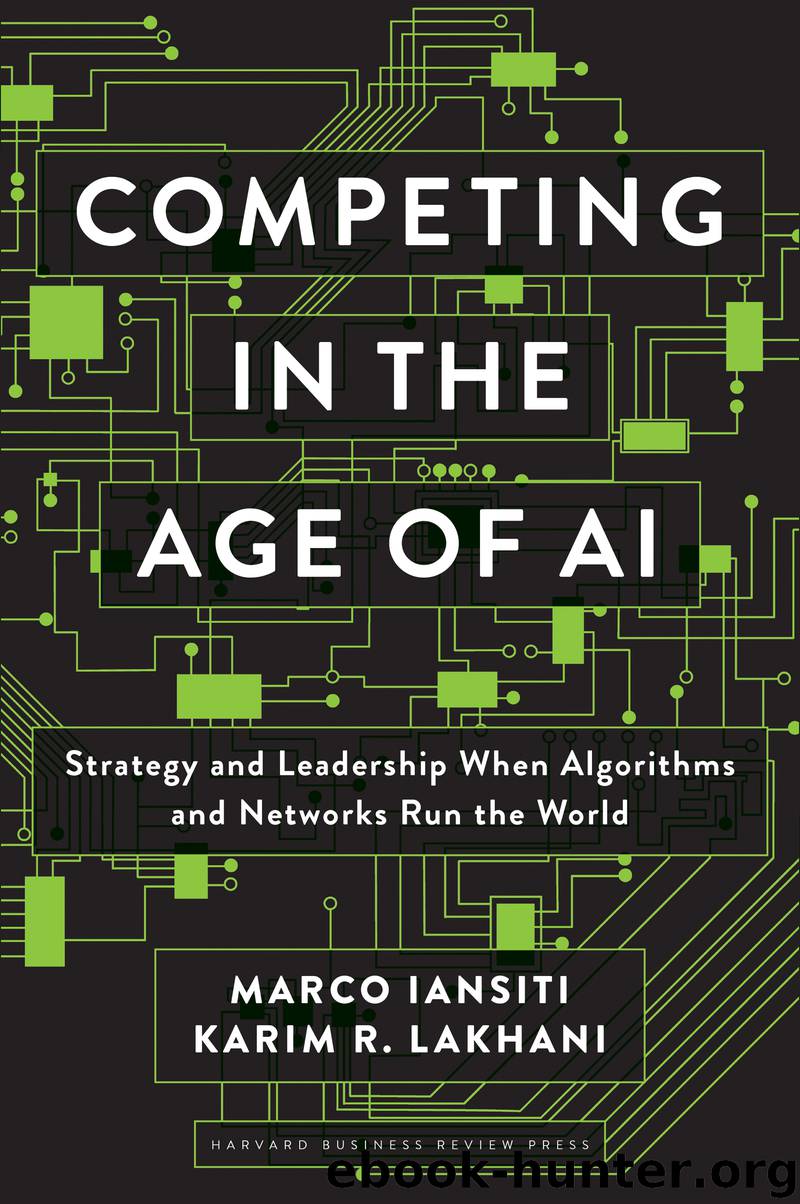Competing in the Age of AI by Karim R. Lakhani & Marco Iansiti

Author:Karim R. Lakhani & Marco Iansiti [Karim R. Lakhani]
Language: eng
Format: epub
Publisher: Harvard Business Review Press
Published: 2020-01-06T16:00:00+00:00
Learning Effects
Learning effects can either add value to existing network effects or generate value in their own right. With Google’s search business, for example, the more searches conducted by users, the more (and more quickly) Google’s algorithms can figure out common search patterns, and the better the service will become. These learning effects are crucial to the value provided by the search engine. As it tried to compete with Google, Microsoft’s Bing partnered with Yahoo! to attract more users and advertisers, in an attempt to increase its user base and resulting scale. However, it rapidly realized that even with the greater scale, its search advertising business was not competitive with Google’s because it didn’t benefit from the same learning effects. Google had had years to learn and experiment with a high flow of incoming data—experience that provided an unbeatable advantage in optimizing its algorithms and delivering not only better search results and engagement but also higher monetization.
Learning effects can reinforce competitive advantage largely because they’re dependent on scale. Generally, the more data used to train and optimize an algorithm, the more accurate the algorithm’s output and the more complex the problem that the algorithm can be applied to solve. Figure 6-3 shows how a selection of prediction algorithms will improve with the size of the dataset. As operating models grow to embody a multitude of algorithms—each requiring large, diverse, and current datasets—learning effects will amplify the impact of scale and scope on the value created by a firm. The bigger the user base, the greater the scale, the more data that is available, and the greater the value. (All this assumes, of course, that the firm has the right operating model and the capabilities to implement the right algorithms.)
The extent to which data can have an enduring impact on competitive advantage differs from application to application. There are a number of reasons for this. First, the accuracy of most algorithms rises with the square root of the number of data points, at least for a while, and then levels off as the algorithm is fully trained. The square root law is an approximation, and in the case of algorithms that operate in isolation, accuracy does not improve that quickly, because most data points gathered are not uncorrelated. But when more than one algorithm drives a business, the combined value of their learning effects can compound. In the Netflix example, a number of both user-centered and back channel algorithms are at play simultaneously.
FIGURE 6-3
Impact of dataset scale on performance
Prediction error decreases significantly with more data.
Source: Baidu Research
Download
This site does not store any files on its server. We only index and link to content provided by other sites. Please contact the content providers to delete copyright contents if any and email us, we'll remove relevant links or contents immediately.
Bad Blood by John Carreyrou(6552)
Rich Dad Poor Dad by Robert T. Kiyosaki(6401)
Principles: Life and Work by Ray Dalio(6209)
Playing to Win_ How Strategy Really Works by A.G. Lafley & Roger L. Martin(5917)
Management Strategies for the Cloud Revolution: How Cloud Computing Is Transforming Business and Why You Can't Afford to Be Left Behind by Charles Babcock(4527)
The Confidence Code by Katty Kay(4187)
Thinking in Bets by Annie Duke(4152)
American Kingpin by Nick Bilton(3757)
Delivering Happiness by Tony Hsieh(3365)
Project Animal Farm: An Accidental Journey into the Secret World of Farming and the Truth About Our Food by Sonia Faruqi(3177)
The Power of Habit by Charles Duhigg(3060)
The Tyranny of Metrics by Jerry Z. Muller(3000)
Brotopia by Emily Chang(3000)
Mastering Bitcoin: Programming the Open Blockchain by Andreas M. Antonopoulos(2981)
The Marketing Plan Handbook: Develop Big-Picture Marketing Plans for Pennies on the Dollar by Robert W. Bly(2975)
I Live in the Future & Here's How It Works by Nick Bilton(2935)
The Content Trap by Bharat Anand(2860)
Building a StoryBrand by Donald Miller(2842)
Applied Empathy by Michael Ventura(2839)
